
views
Identifying Police Vehicles
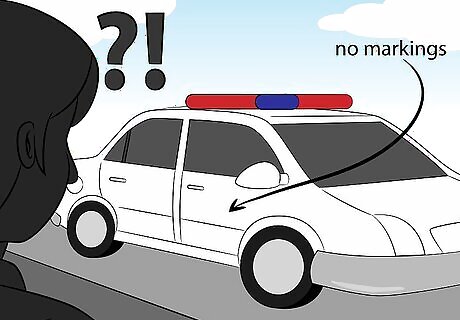
Check to see if it's a marked vehicle. If the vehicle has police markings, it is highly unlikely that it would be an imposter. A civilian driving a marked police vehicle would most likely be spotted very quickly by an actual police officer, and that individual would quickly get arrested for impersonating an officer. If a marked police vehicle is attempting to pull you over, it's generally safe to assume that that individual is a real police officer.
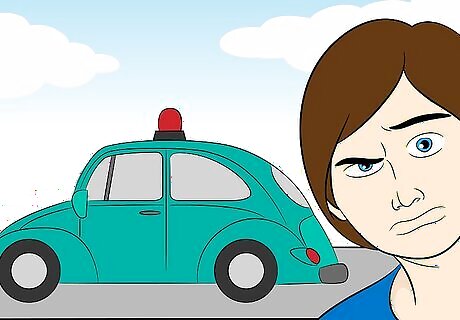
Identify the vehicle's make and model. If the vehicle is not clearly marked as a police vehicle, you'll need to identify what make and model the vehicle is. Police officers in the United States generally only drive a limited number of vehicle makes and models, and those vehicles are usually in decent shape (though they may be scratched up or lightly dented from previous pursuits). Police sedans in the United States are almost always a Ford Crown Victoria, a Chevy Impala, a Dodge Intrepid, a Dodge Charger, or a Chevy Lumina. Police SUVs are almost always a Ford F150, a Chevy Tahoe, a Ford Explorer, or a Dodge Durango. Most police departments use relatively new vehicles. If the vehicle pursuing you looks old and/or very broken down, it may not be a real police vehicle.
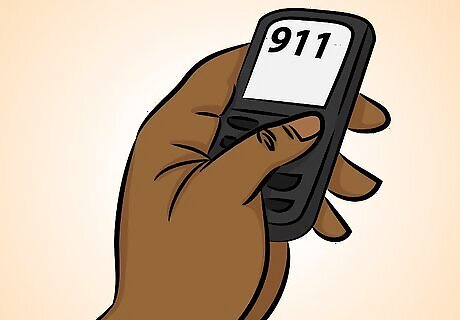
Call 911 while you're being pulled over. If you're still not sure whether it's a real police officer, the best thing to do is to call 911. Try to give the dispatcher a detailed location of where you are and a description of your vehicle and the alleged police vehicle. The 911 dispatcher will be able to use that information to check with the local police or sheriff's department to determine whether the vehicle you're being pulled over by is actually a police vehicle, and whether that officer has actually pulled you over. Be sure to give the make, model, and license plate of both your vehicle and the vehicle you're being pulled over by.

Learn your state's laws. Though some states permit unmarked police vehicles to conduct routine traffic stops, some states have outlawed this practice. In New York State, for example, unmarked vehicles are no longer allowed to stop motorists for routine traffic violations (though certain exceptions may be made). Other municipalities have very strict rules on whether a plain-clothes officer can conduct traffic stops, regardless of the vehicle that he or she is driving. Search online to find out whether unmarked and/or plain-clothes traffic stops are permitted in your state, county, or city. You can also call your local police or sheriff's department to find out about their policies on unmarked vehicles.
Determining If the Driver Is Actually a Police Officer
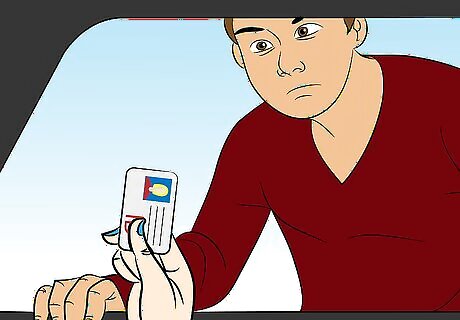
Look for a uniform. Most police officers who are on duty will be wearing an official police uniform. In fact, some municipalities have outlawed plainclothes police officers from conducting traffic stops. However, many municipalities do allow plain clothes officers to conduct traffic stops if those officers observe a traffic violation. Use your best judgment, and remember that a uniform isn't always a solid confirmation that an individual is an officer. Police uniforms can be purchased by civilians, so it's not a definite way to determine an officer's status. If someone pulls you over in an unmarked car and that individual is not wearing a uniform at all, you should be on alert. Call 911 to confirm that the individual is an officer before you pull over or roll down your window.
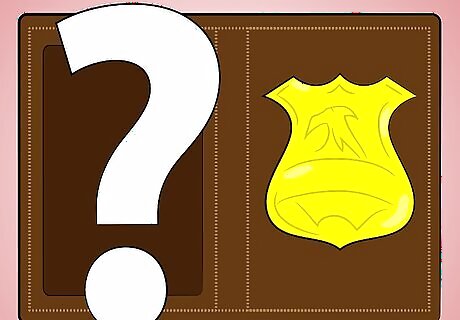
Ask to see proper identification and credentials. If you're pulled over by an unmarked car or a plainclothes police officer, you should always confirm that the individual is actually a police officer. A law enforcement officer must show you his or her badge upon request, and no real police officer would refuse to do this. In addition to badges, some municipalities also issue official police identification cards. These cards should be official, laminated photo IDs, not merely business cards. Familiarize yourself with what your local police identification looks like in advance so that you'll be able to spot a fake in the event that you're pulled over. If you're still not convinced, you can always write down the officer's badge number, call 911, and confirm that that badge number is valid. You should do this through a narrowly-cracked window so that you can both pass identification back and forth without endangering your safety.
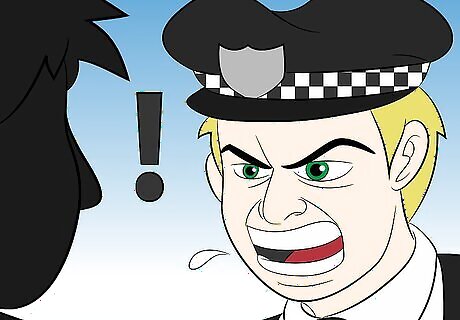
Observe how the individual behaves when you ask for ID. How an individual behaves when you ask for identification can tell you a lot about that person's identity. A real police officer will have no problem showing you his or her badge. That officer should show you the badge long enough so that you can get a good look and write down the badge number. A real officer will not simply flash the badge and then put it away. An officer will also be understanding if you're concerned about the unmarked car and/or lack of uniform, and will provide you with the necessary identification. If the individual gets angry or threatening, acts suspiciously, or behaves unprofessionally (such as banging on your door or ordering you to exit the vehicle), that individual may not be a police officer. If you feel threatened or unsafe, call 911 immediately, and let the individual know that you're calling 911. If the individual flees the scene when you call 911, he or she was not a real police officer.
Knowing How To Behave When You're Pulled Over
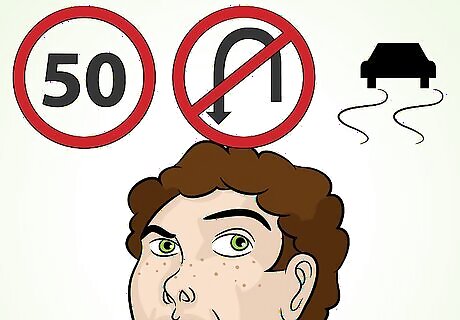
Assess whether you've broken any traffic laws. A good way to gauge whether you're actually being pulled over is to determine whether you've broken any laws. There are many traffic laws, and those laws may vary somewhat from state to state, but generally speaking there are some basic laws that you will recognize if you've broken them. Exceeding the posted speed limit by five or more miles per hour is usually sufficient cause for an officer to pull you over. Changing lanes without signaling, making an illegal u-turn, crossing a double-yellow line, or swerving and driving erratically are all sufficient reasons to be pulled over. If you're driving at night or in inclement weather (in some states) without your headlights on, or if you have a burned-out bulb in your headlights, tail lights, or turn signals, you may also be pulled over by an officer. If you haven't done anything wrong and a vehicle is attempting to pull you over, especially at night and/or in a remote area, you should be cautious and keep your guard up.
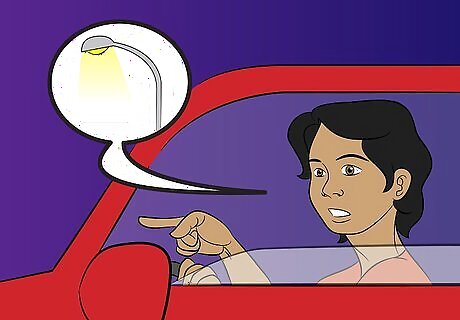
Signal that you're looking for a place to pull over. If you feel unsafe pulling over in an unlit or remote area, you should not pull over yet. However, you'll need to signal to the individual that you are actually going to pull over. Otherwise you could be charged with evading the police, should it turn out to be an actual police officer. Immediately put your four-way hazard lights on. Turn on the dome light inside your vehicle so the officer can see you clearly and know that you're not reaching for a weapon. When you do pull over, keep your hands where the officer can see them and avoid any sudden or unnecessary movements. Slow down to a very low speed. Don't drive so slow that you'd hold up traffic (if other cars are around) or cause an accident, but enough to let the officer know that you're not trying to flee. Look for a well-lit or public area to pull over. Stopping on the side of the road in a remote area can be very dangerous if the individual is not a real police officer.
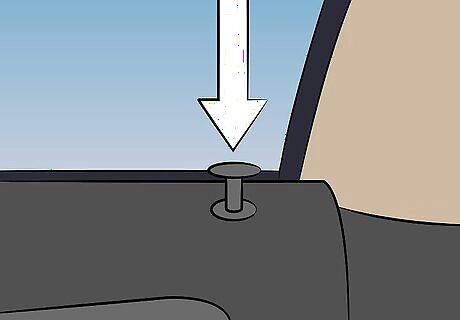
Stay safe inside the vehicle. Once you've pulled over, you'll need to take steps to protect yourself during the exchange. If the individual is actually a police officer, he or she should understand your concerns and be willing to work with you to ensure your safety. Keep your doors locked and remain inside the vehicle. Lower the window just a few inches so that you can exchange information and identification through the window. This will prevent the individual from reaching in and unlocking your door in the event that he or she is not a real officer. Ask for identification, or call 911 with your location and description so that the dispatcher can confirm that the individual is actually a police officer. Ask the officer to call another officer or a supervisor to the scene. You are within your rights to request this, and most police officers driving in plainclothes or an unmarked vehicle will understand your concern and comply without a problem. If the officer will not call for a second officer or supervisor, let the officer know that you'd like to follow the alleged police vehicle (or have him/her follow your vehicle) to the nearest police station. Explain again that you're willing to comply with the law, but you're concerned for your safety.




















Comments
0 comment